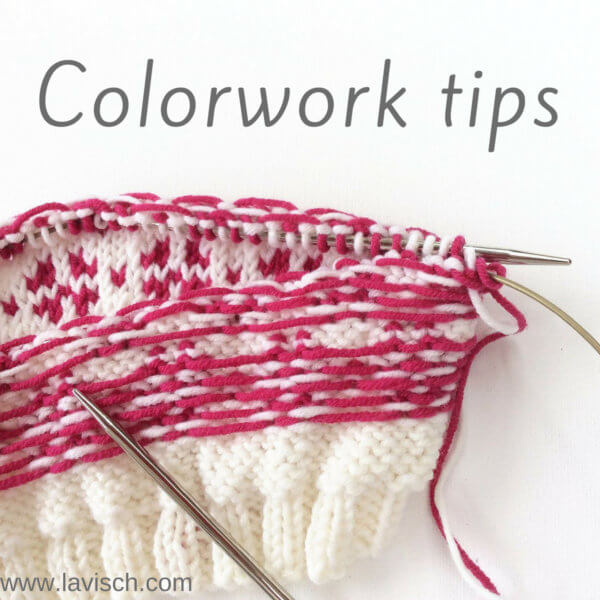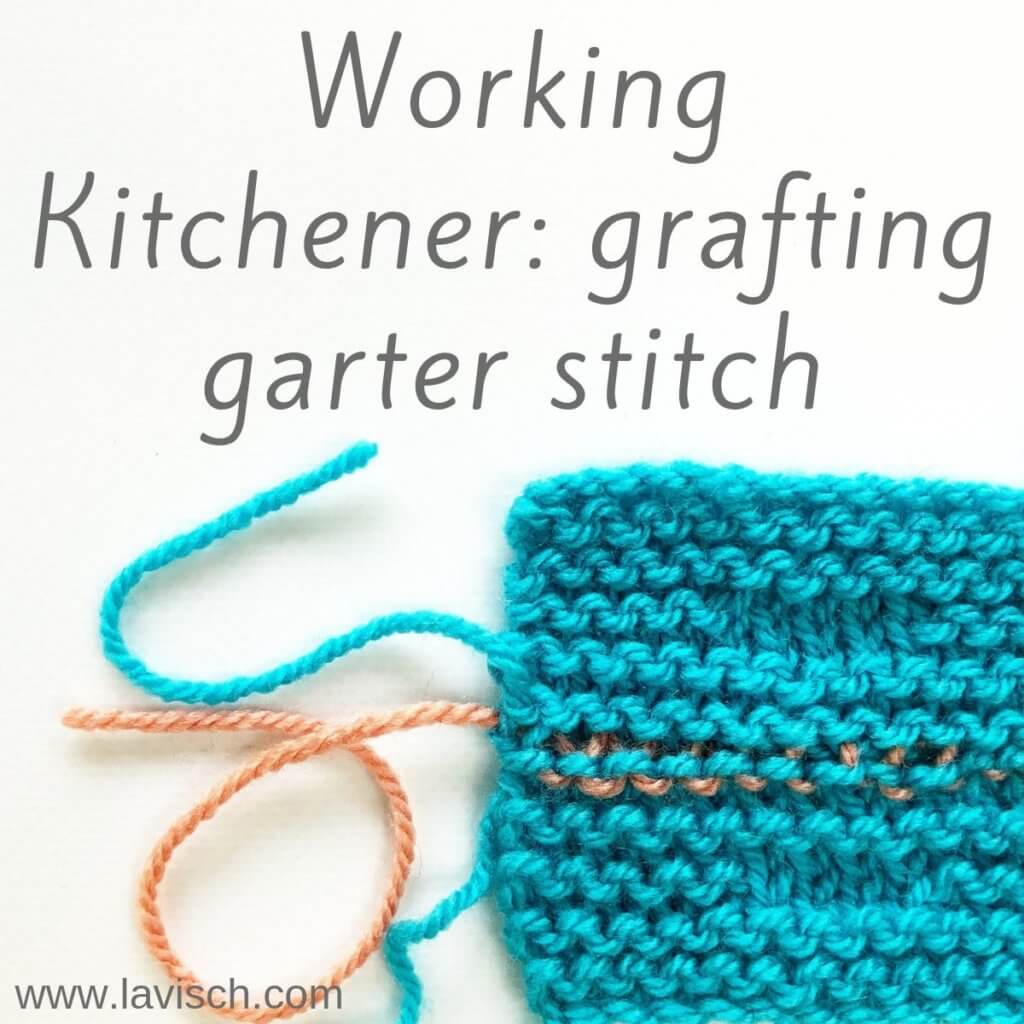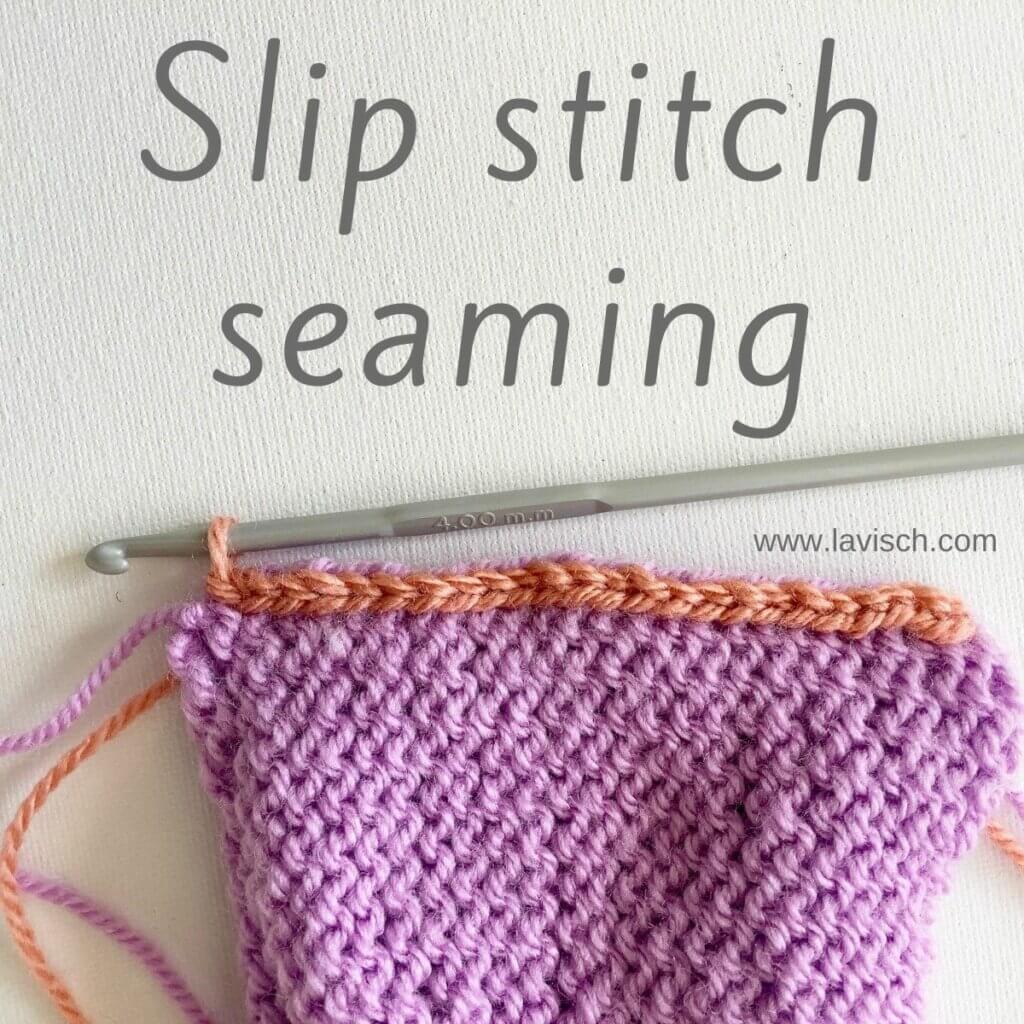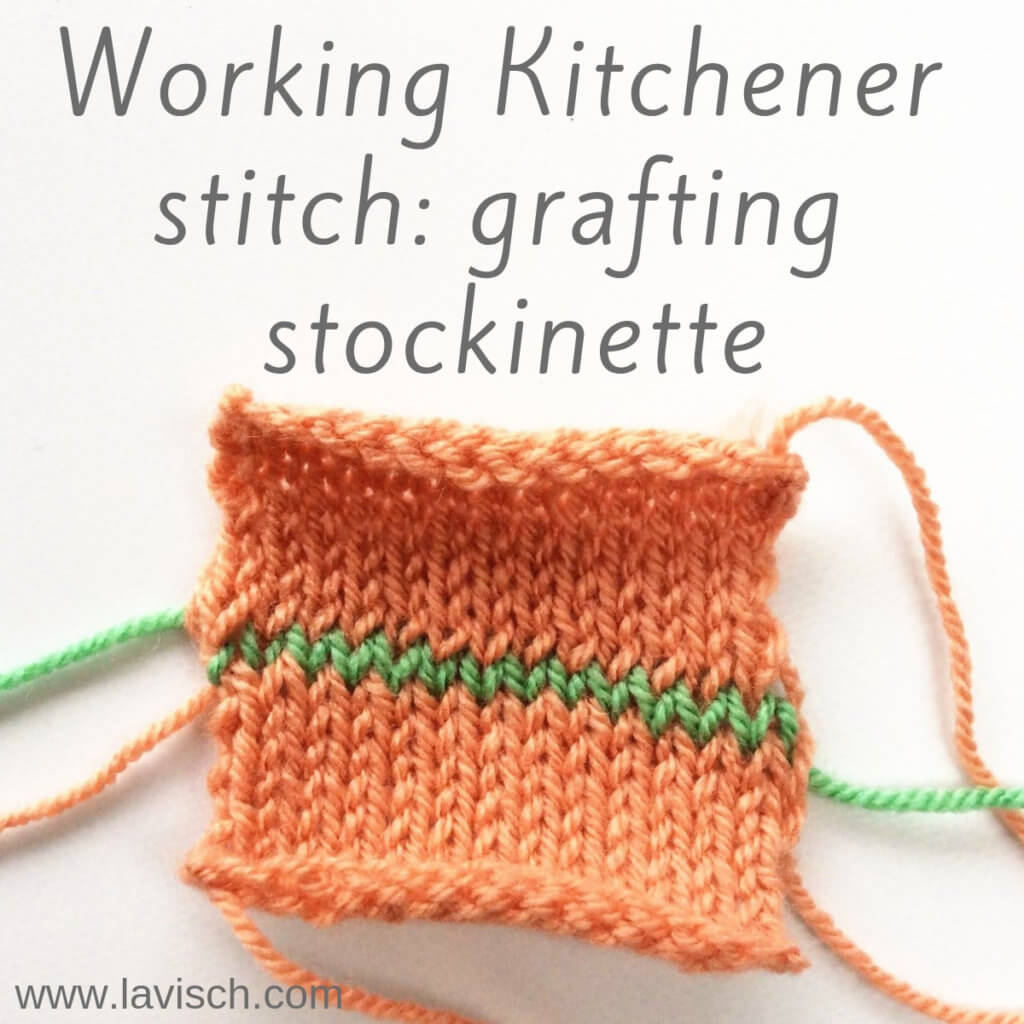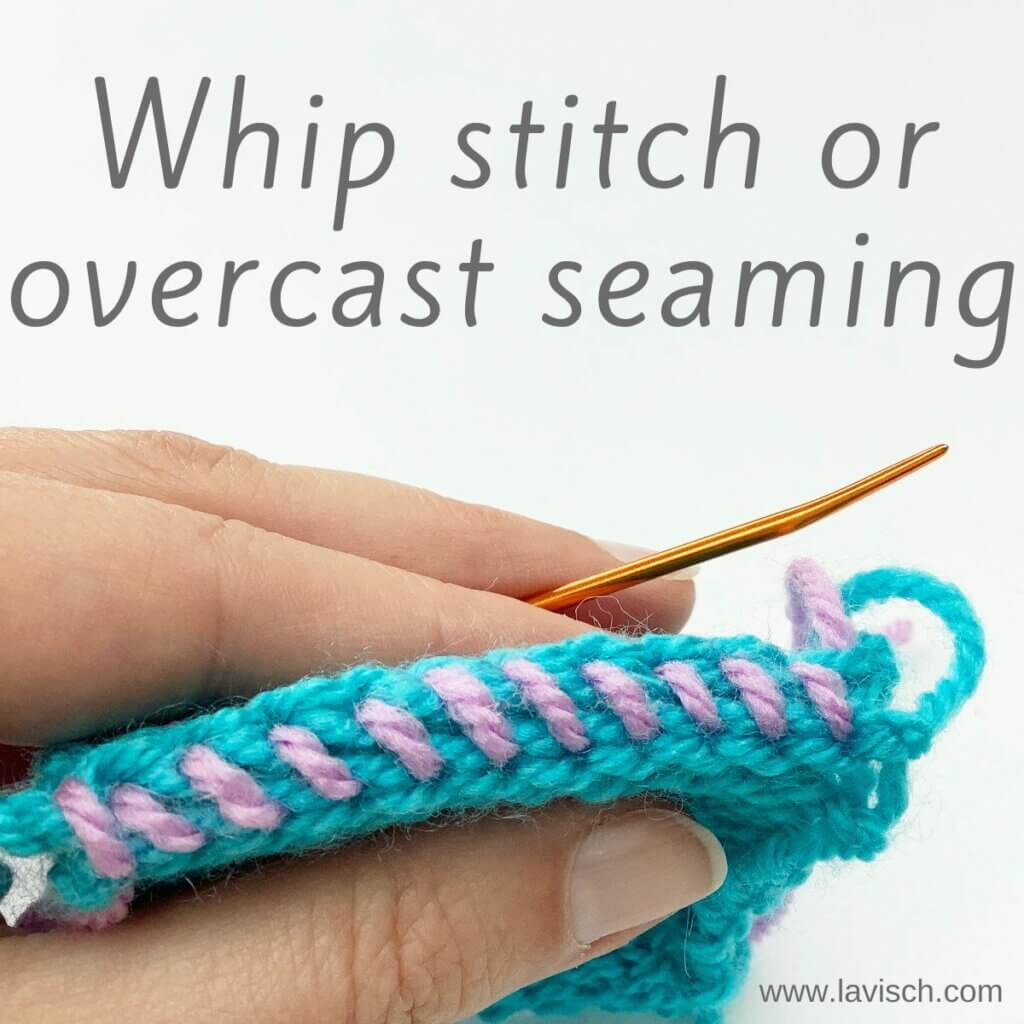
As I wrote in my tutorial on the mattress stitch, there are many ways to join two pieces of knitted fabric together. And they all have their own advantages and disadvantages! In this post, I’ll be talking about seaming with the whip stitch, using a darning needle. This technique is also called an overcast stitch because of the way it looks on the side where it’s worked. It’s a pretty basic and fast to work seaming technique. I’m using a contrasting yarn to make it easy to view what exactly I’m doing in the various pictures. However, if you want the seam to be less visible, make sure to use a yarn that matches the knitted fabric.
Materials used
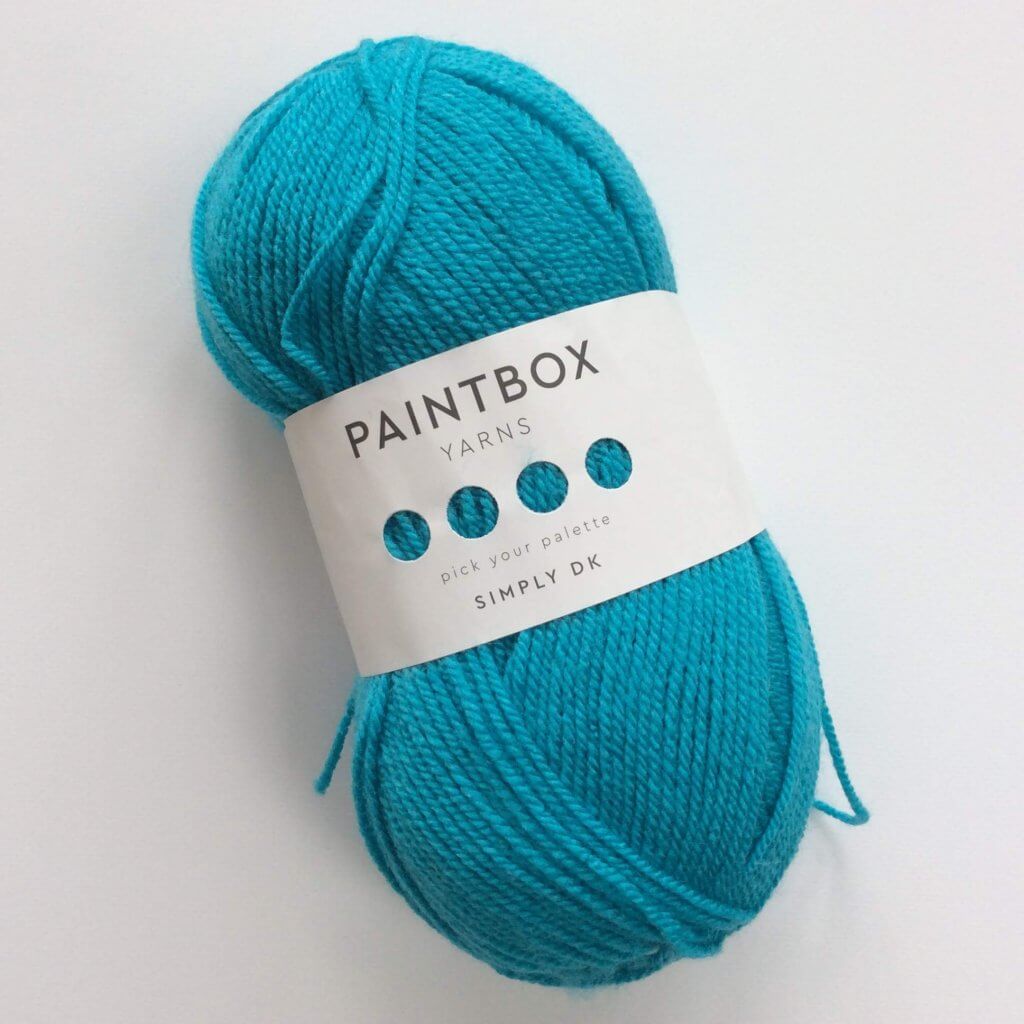
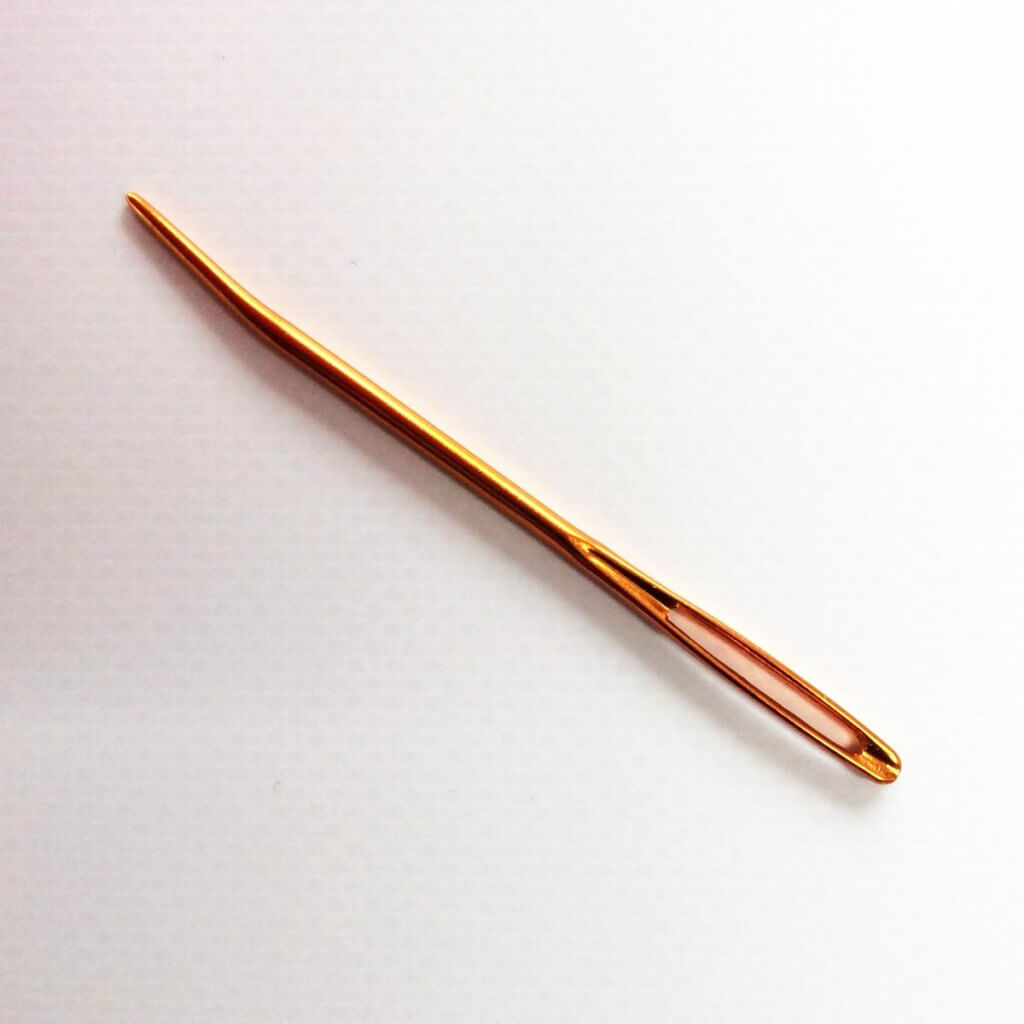
Yarn: Paintbox Yarns Simply DK, a good value, good quality 100% acrylic yarn, here in the color Marine Blue. I also used a bit of Tea Rose.
Darning needle: Hiya Hiya Darn It Yarn Needle, or any other tapestry needle, threaded with yarn. You will need a length of yarn about three times longer than the length of the seam.
Whip stitch seaming step by step
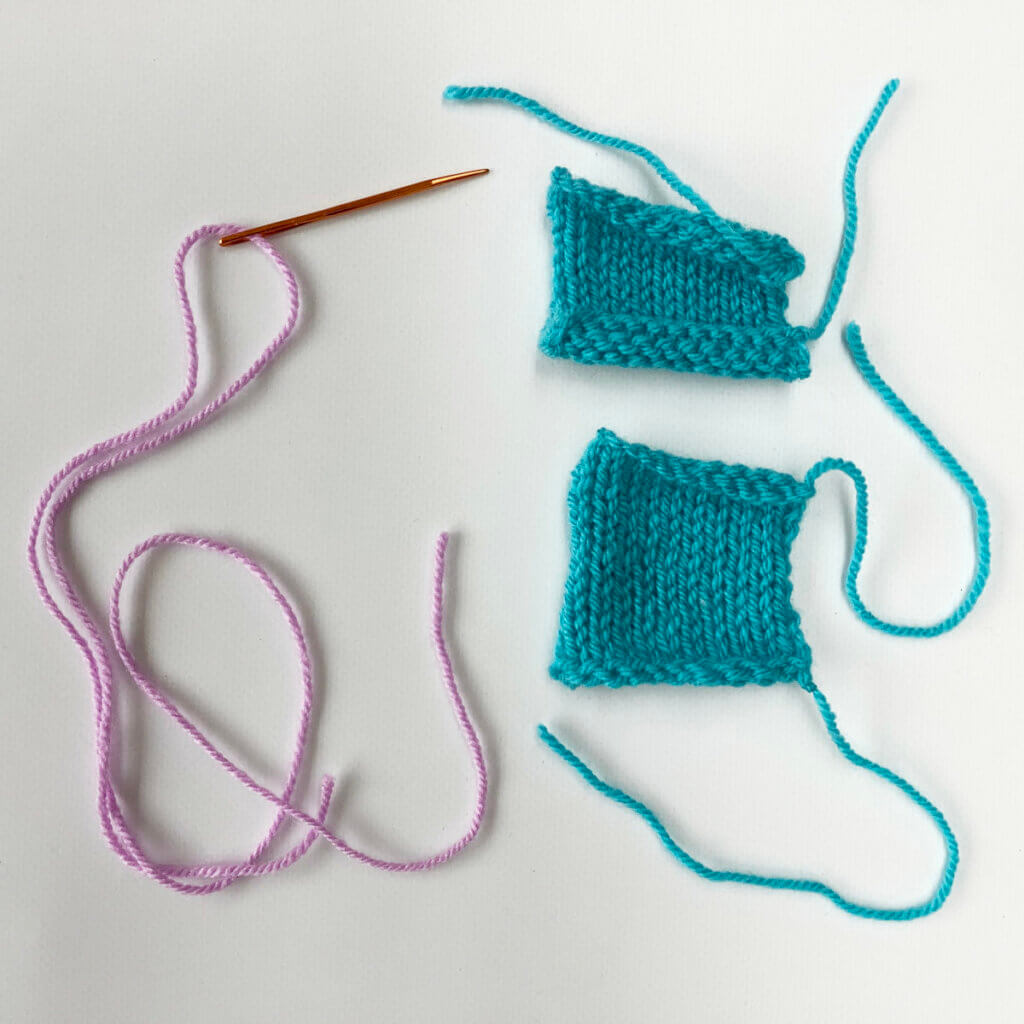
In this tutorial, I’m using 2 turquoise swatches to show you how to seam them together using the whip stitch or overcast stitch, with the lilac yarn. This particular seaming technique can be done with both the right side or the wrong side of the fabric facing. It yields a decorative seam, that could be used as a design feature when visible on the outside of the piece, especially in a contrasting yarn. In this example, however, I’m working it with the wrong side facing, to have the seam on the inside of the piece.
- First, line up the edges of the pieces to be seamed together.
As said, here I’m working with the swatches with their right sides together.
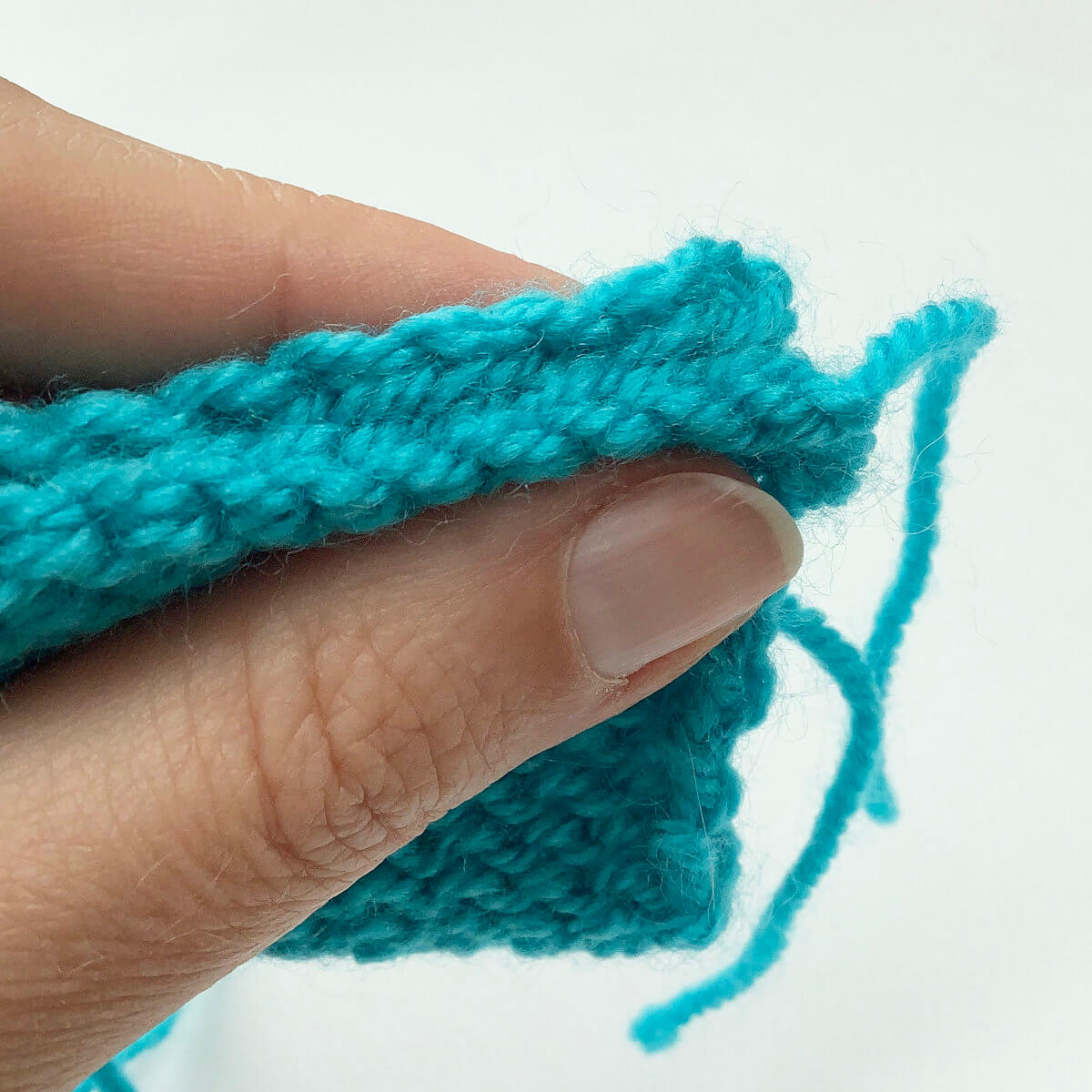
- To start, insert the needle from back to front along the edge of the right side of both pieces. Take care to go under both strands of the edge stitch for each piece, and to leave a tail long enough to weave in later. Pull the yarn through.
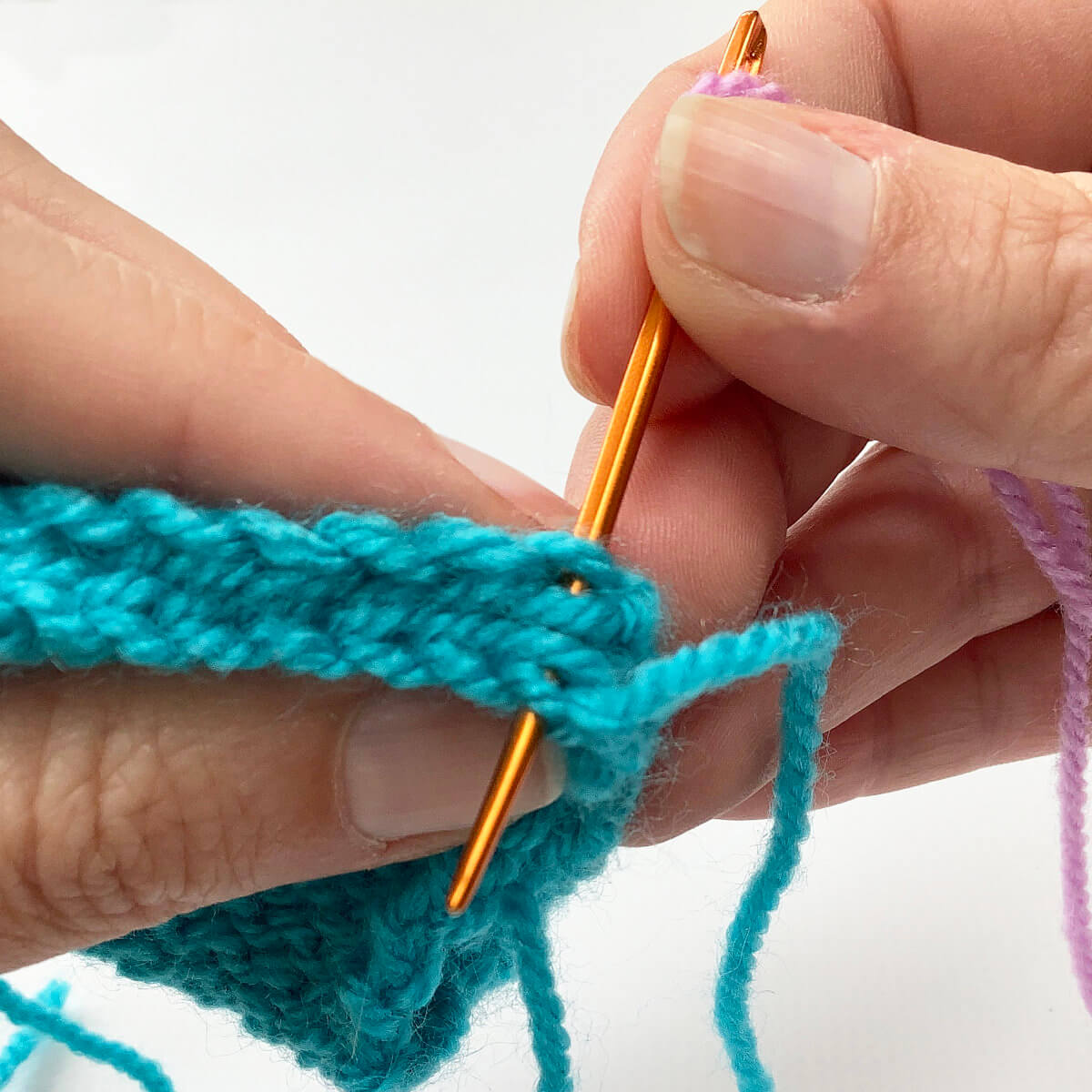
- Next, insert the needle from back to front of the next stitch on both pieces of fabric.
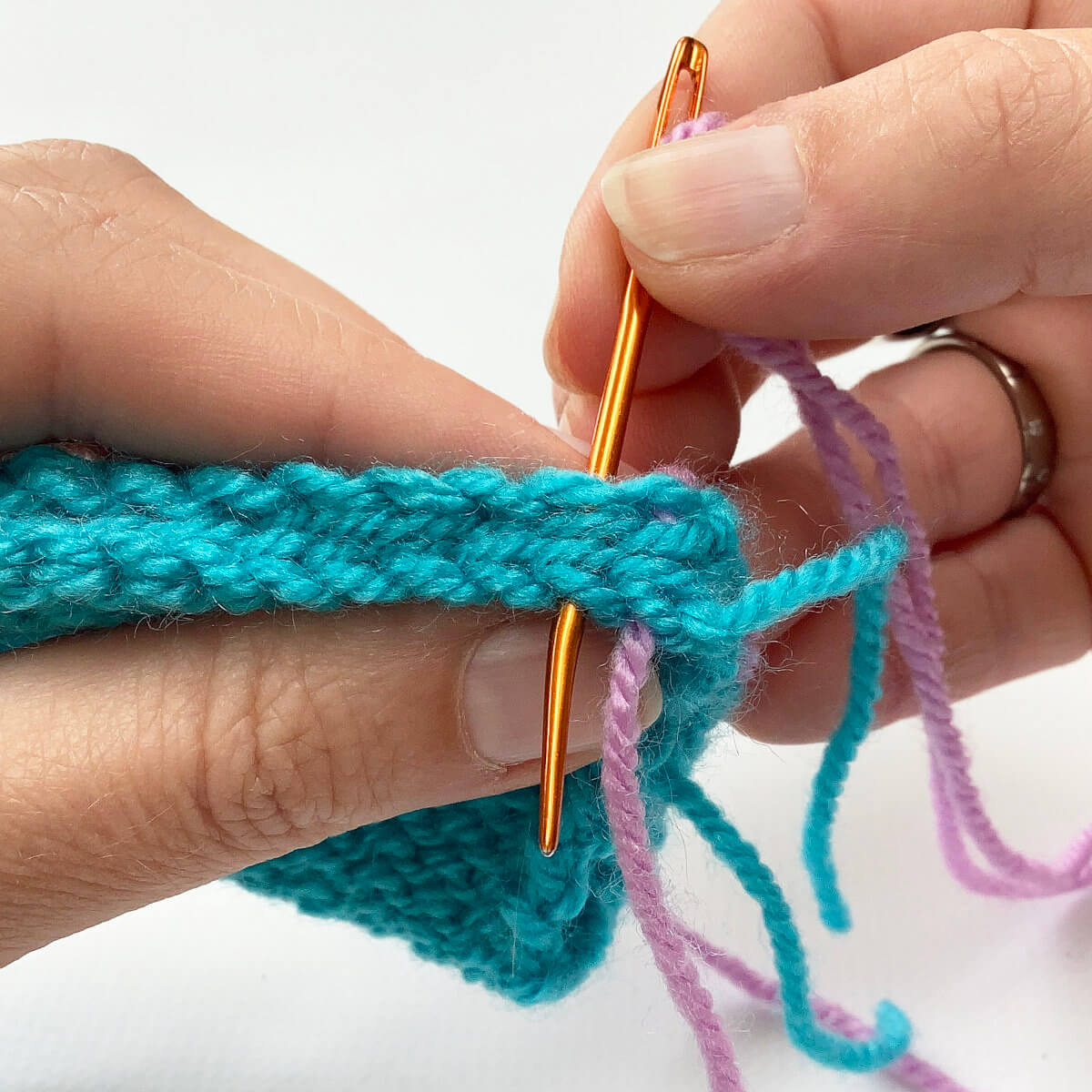
- Pull the yarn through.
See how it forms loops over the edges of both swatches? This is why this is also called the “overcast” seaming method.
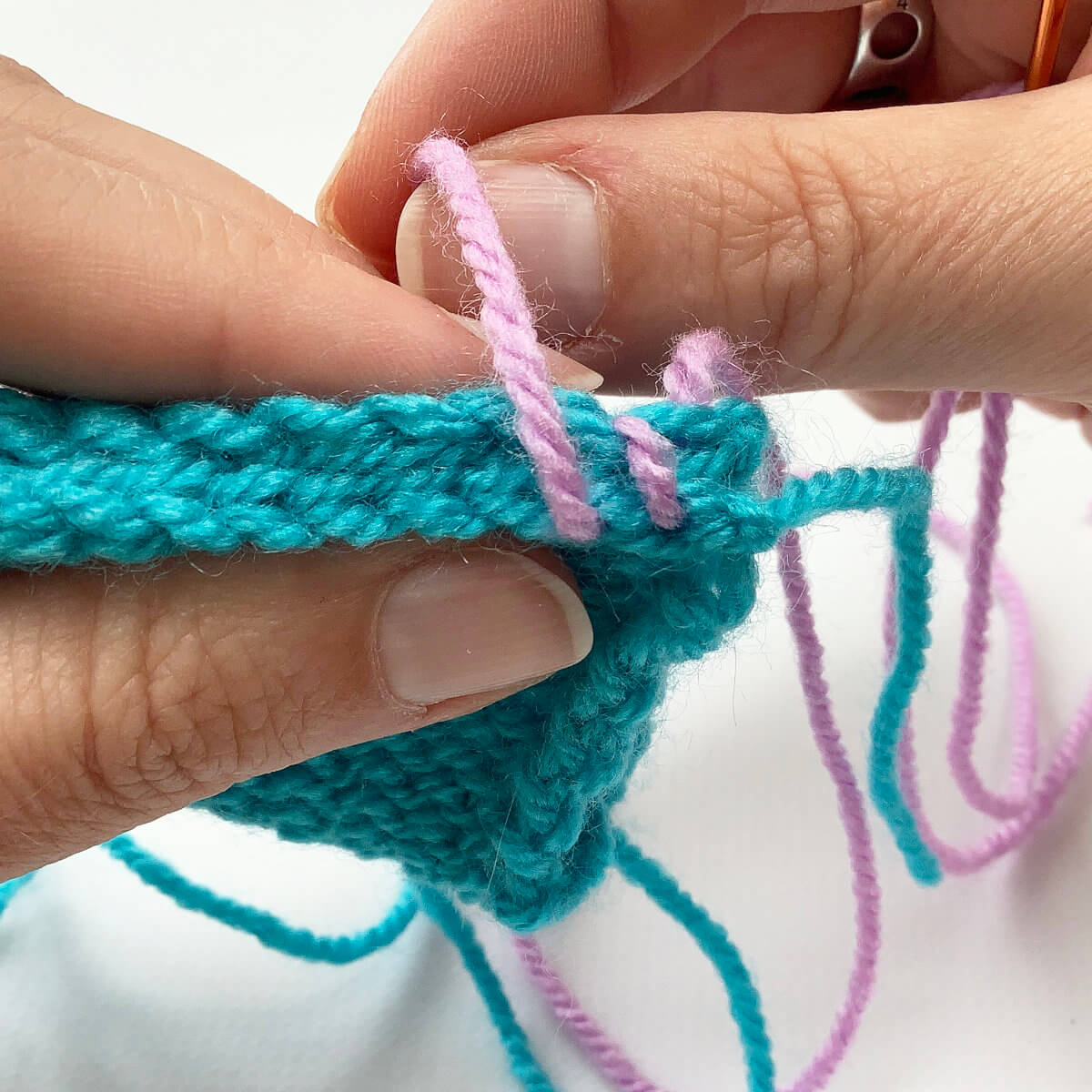
- Repeat steps 3 and 4, each time moving one edge stitch to the left, until the entire edge has been worked.
To complete it, just break the yarn and pull the end through the last remaining loop before weaving in the ends.
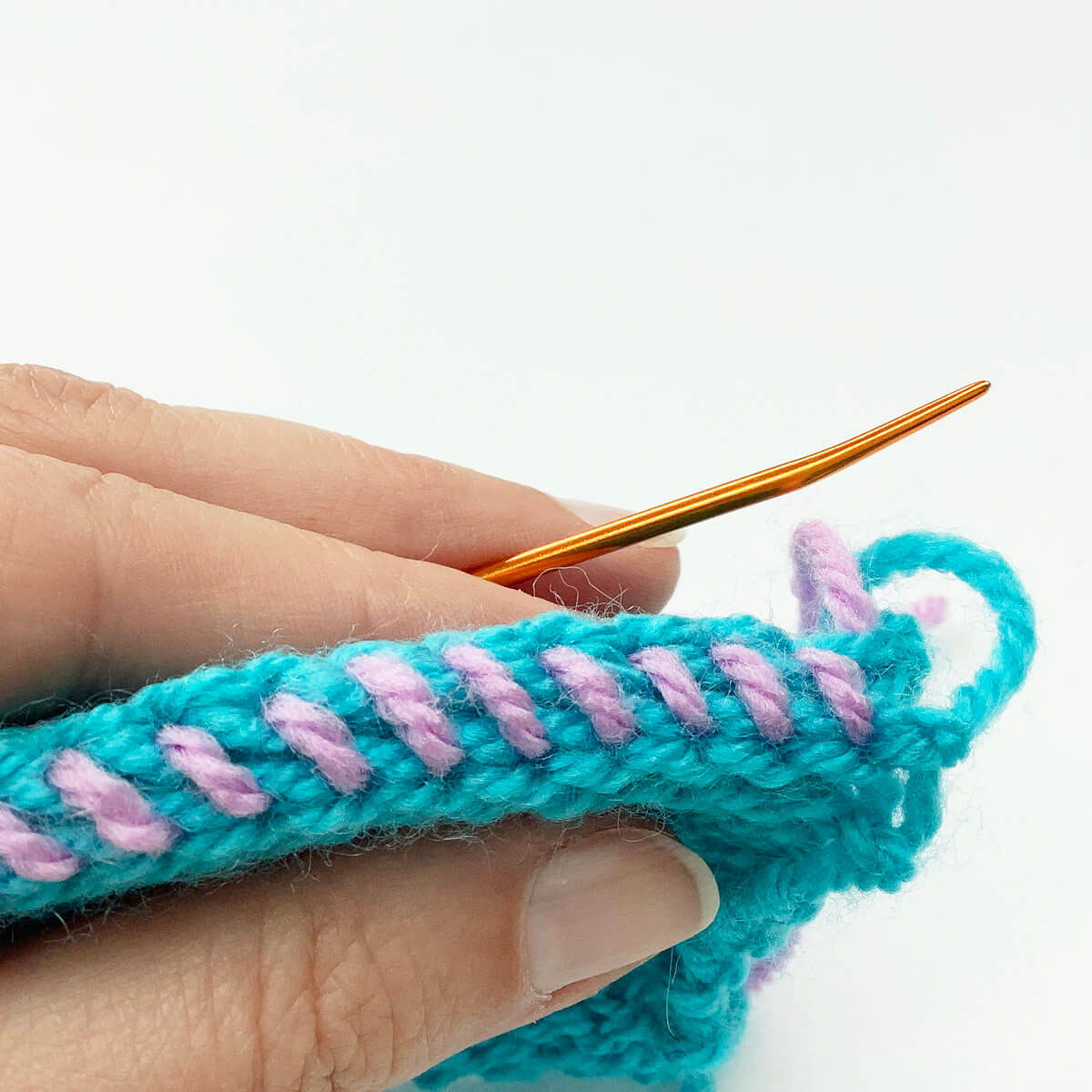
- When laid flat, it looks like this:
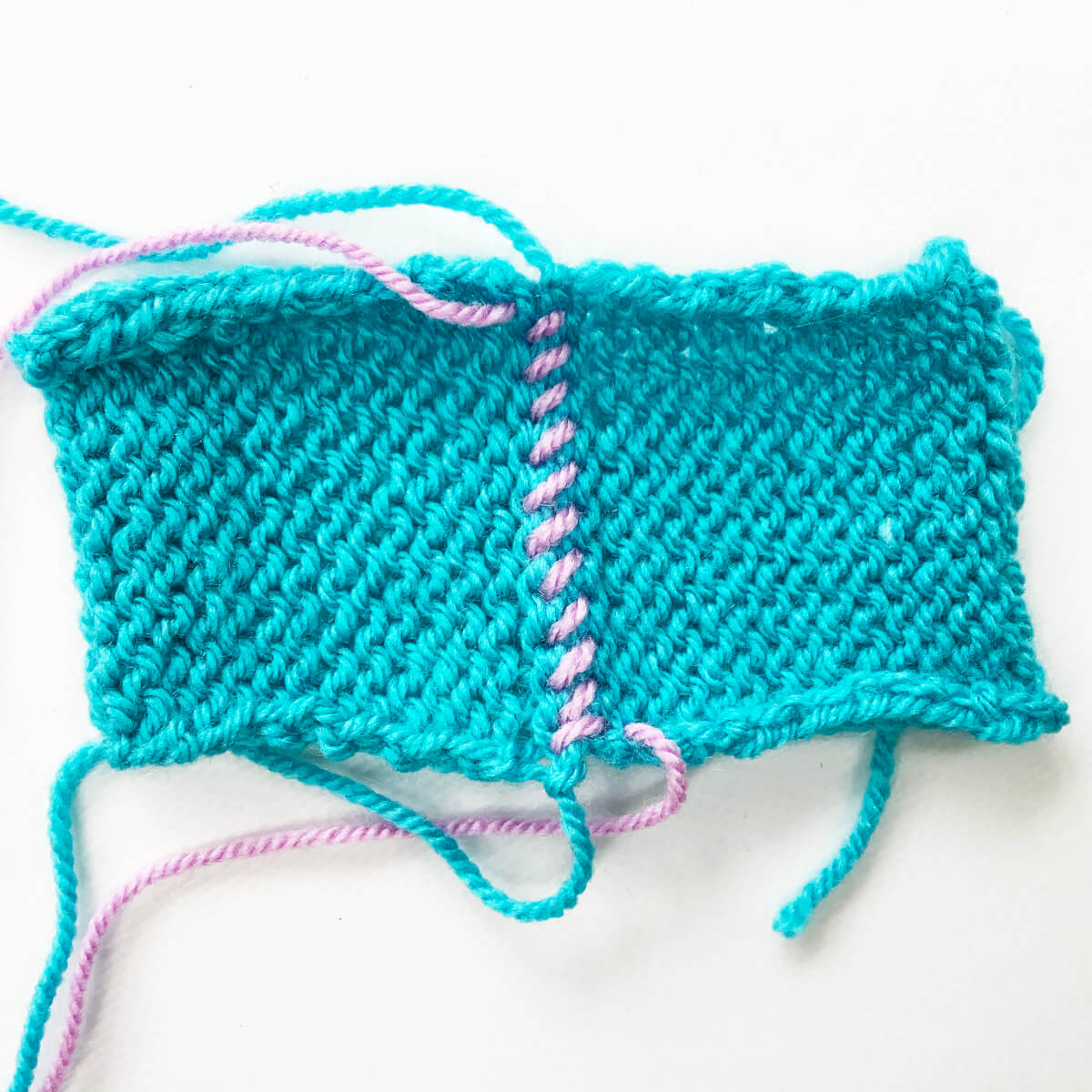
The result when viewed from the RS
For completeness’s sake, you can see below how this seam looks on the other side of the fabric, the right side, in this case:
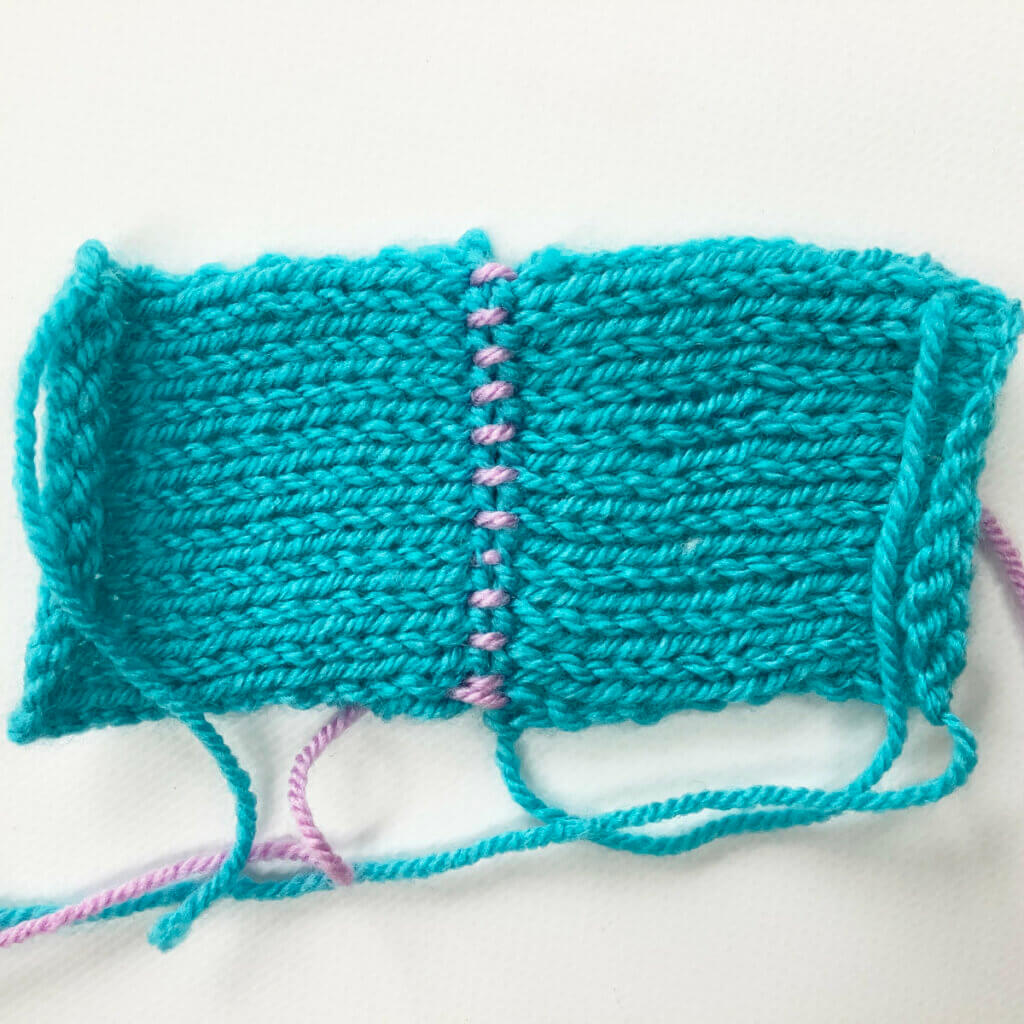
What if I’m not working with BO or CO edges?
You can, of course, also use this seaming technique on the side edges of knitted fabric. In that case, identify the column of stitches at the edge of the fabric. To work the seam, insert the darning needle underneath both legs of the v at the edge of the fabric for each swatch.
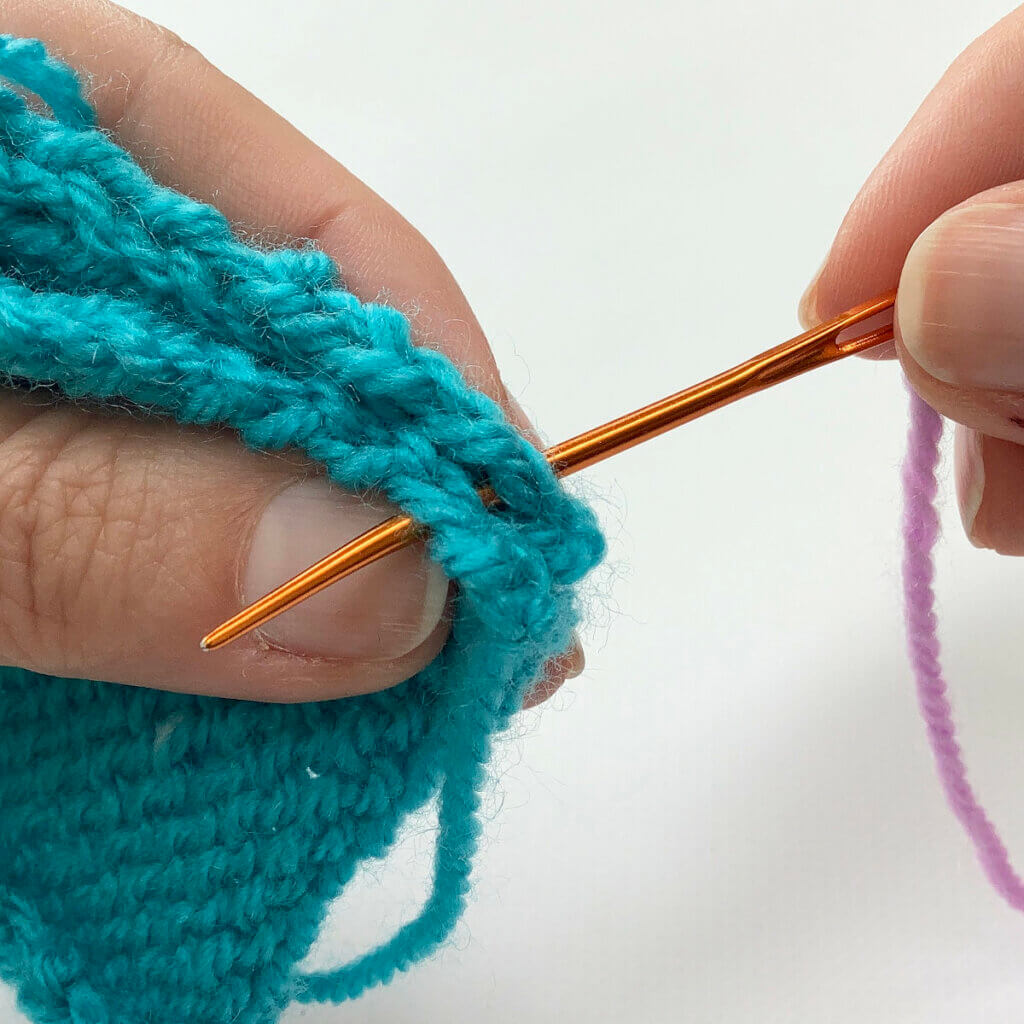

Thanks to my Patreon supporters for bringing you this freebie! Creating quality patterns and tutorials is a lot of work and resource-intensive. However, I find it important to give you free content like this tutorial. Thanks to the generous support of my Patreon supporters, I can make it happen. Thank you, patrons! Click here to join, or click here to read more about La Visch Designs on Patreon.

